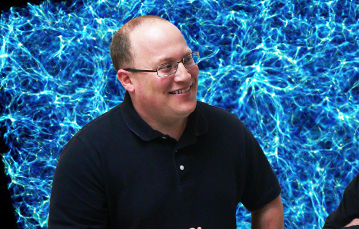In this video from the 2014 Blue Waters Symposium, Brian O’Shea from Michigan State University presents: Studying the Cosmic Dark Ages with Petascale Supercomputing.
In this PRAC project, we are investigating the earliest stages of cosmological structure formation – namely, the transition of the universe from a dark, empty place to one filled with stars, galaxies, and the cosmic web. In investigating the “cosmic Dark Ages,” we focus on three specific topics: the transition between metal-free and metal-enriched star formation, which marks a fundamental milestone in the early epochs of galaxy formation; the evolution of the populations of high-redshift galaxies that will form Milky Way-like objects by the present day; and the reionization of the universe by these populations of galaxies. All of these problems require simulations with extremely high dynamic range in space and time, complex physics (including radiation transport and non-equilibrium gas chemistry), and large simulation volumes. We use the Enzo code (enzo-project.org), which has been modified to scale to large core counts on Blue Waters, which is the only machine available where the heavy data and communication needs can be satisfied.




